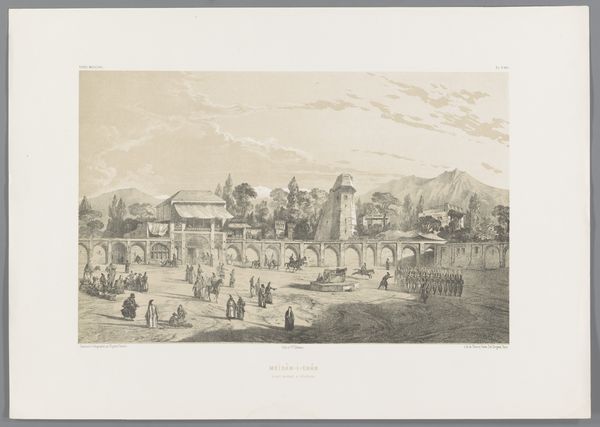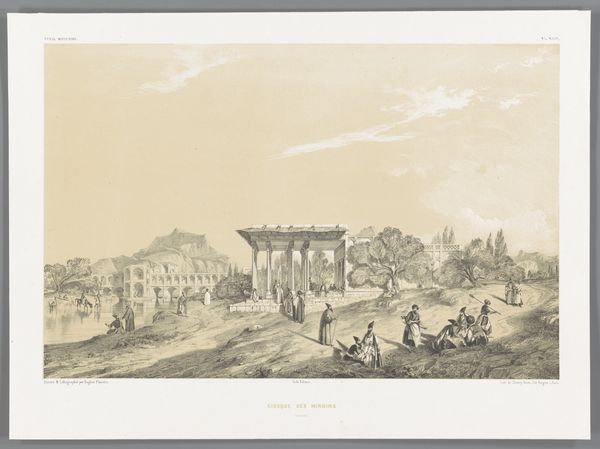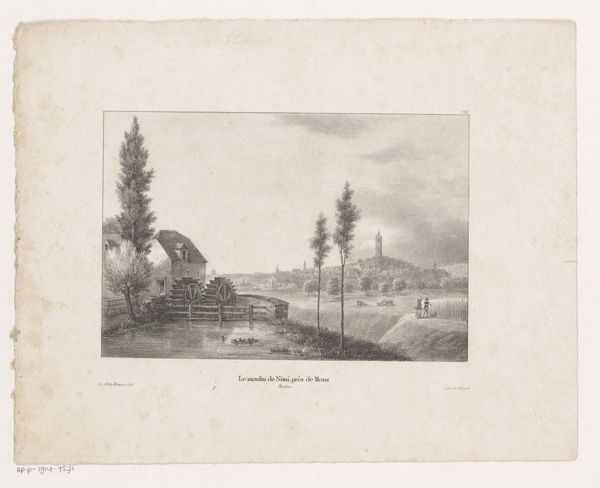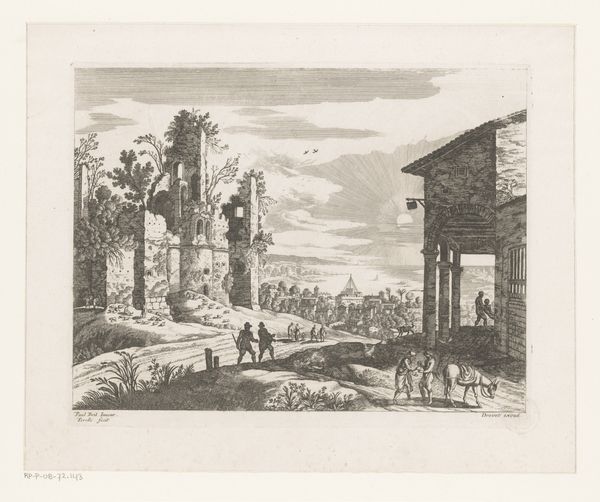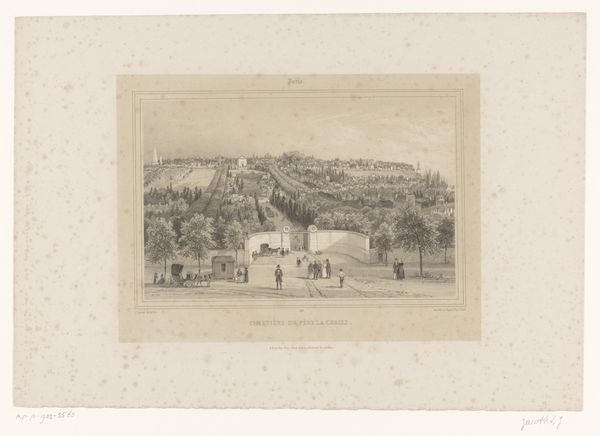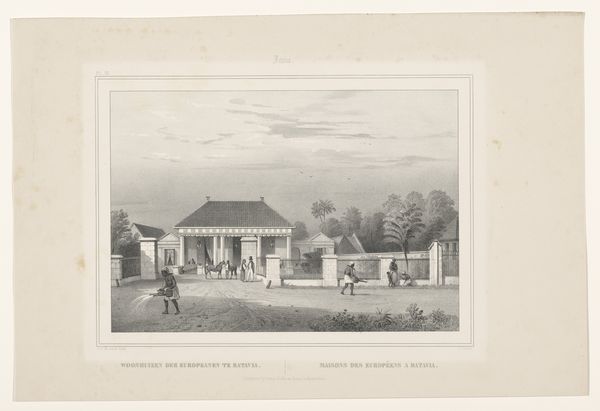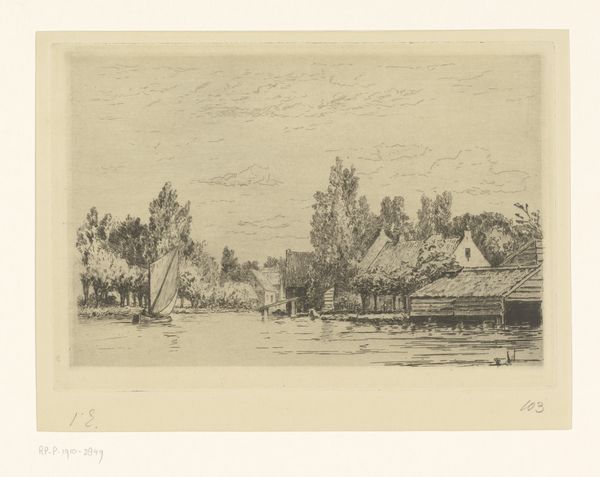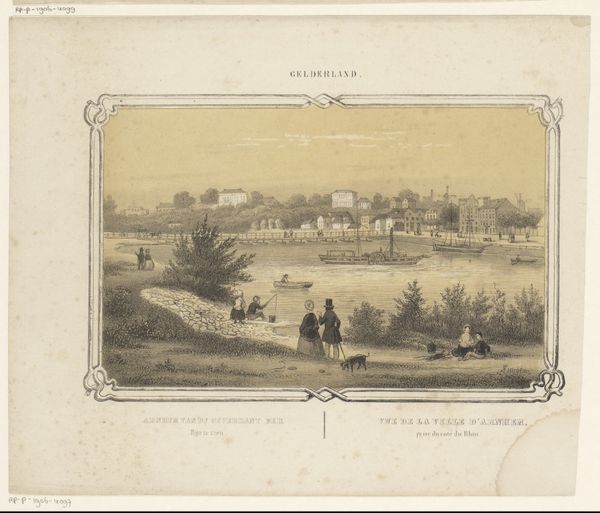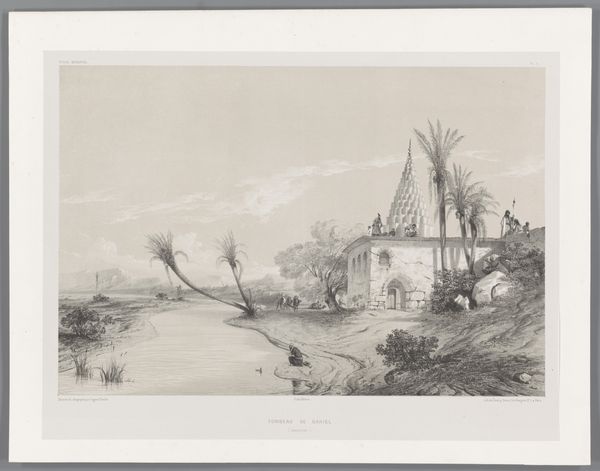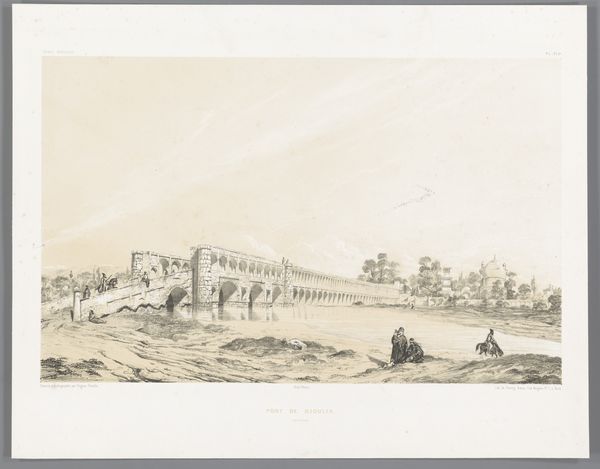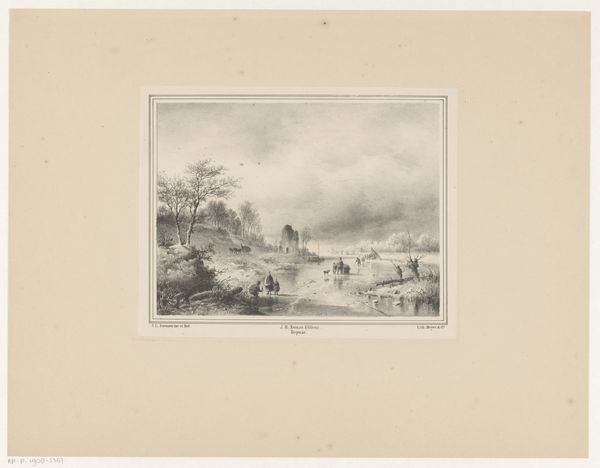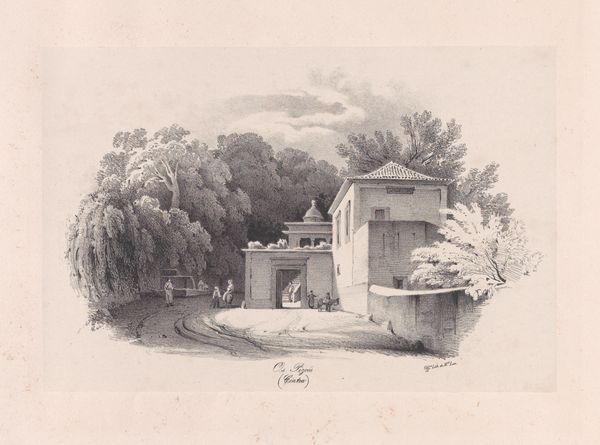
drawing, paper, ink
#
drawing
#
aged paper
#
landscape
#
paper
#
natural colour palette
#
ink
#
orientalism
Dimensions: height 414 mm, width 570 mm
Copyright: Rijks Museum: Open Domain
Curator: Eugène Flandin's "Nou Bagh Palace in Shiraz," made between 1843 and 1854, it's a delicate dance of ink on paper, capturing a scene of stately leisure. Editor: It has a dreamlike quality. Pale, sepia tones. Immediately, I’m thinking about the actual paper used, the fibers, the age… it evokes a time capsule feel. Curator: Precisely. Flandin, part of a French diplomatic mission to Persia, sketched this scene. I'm transported to this almost ghostly serene world within the work. Does it do the same to you? Editor: My eye’s caught by the architectural canvas awnings. What fabric, how often would those be replaced, the labor involved... it adds an unexpected layer of domesticity, right? This meeting between imperial spectacle and everyday practicalities fascinates me. Curator: It's so true. These carefully drawn details that humanise this grand Orientalist depiction really make you appreciate the complexity of lived experience at that time. There is this constant tension between reality and an exotic, dream-like interpretation... Editor: Looking at the medium of ink, it reminds us of the tangible constraints that came before digital imaging. Consider also, ink being used as a kind of inventory, documenting colonial adventures of that period in history... the geopolitics seep into the page. Curator: The very essence of capturing something in ink grounds the ethereal to our plane, doesn't it? In that way the architecture and figures become touchstones across eras. I almost see that reflection dancing off the page like something timeless. Editor: Right. Every carefully etched line is like an attempt to record or maybe consume an entire place, but then distilled to its materiality. Was the intent here documentary, or artistic? Or somewhere on the continuum? Curator: Perhaps the value comes from how it straddles both intentions. A convergence of observing and crafting a legacy through the simple act of applying ink on paper. Editor: Indeed. It really invites pondering over production methods and how it mirrors the cultural lens that created it, not just the images it captures. Curator: It speaks so much about how empires were seen then, in such a simple fashion. That interplay has become more vibrant after discussing its material essence. Editor: Precisely. And by thinking about the actual material creation, a whole layer of complexity emerges, questioning those past romantic impressions, and how we create or interpret these kinds of images now.
Comments
No comments
Be the first to comment and join the conversation on the ultimate creative platform.
